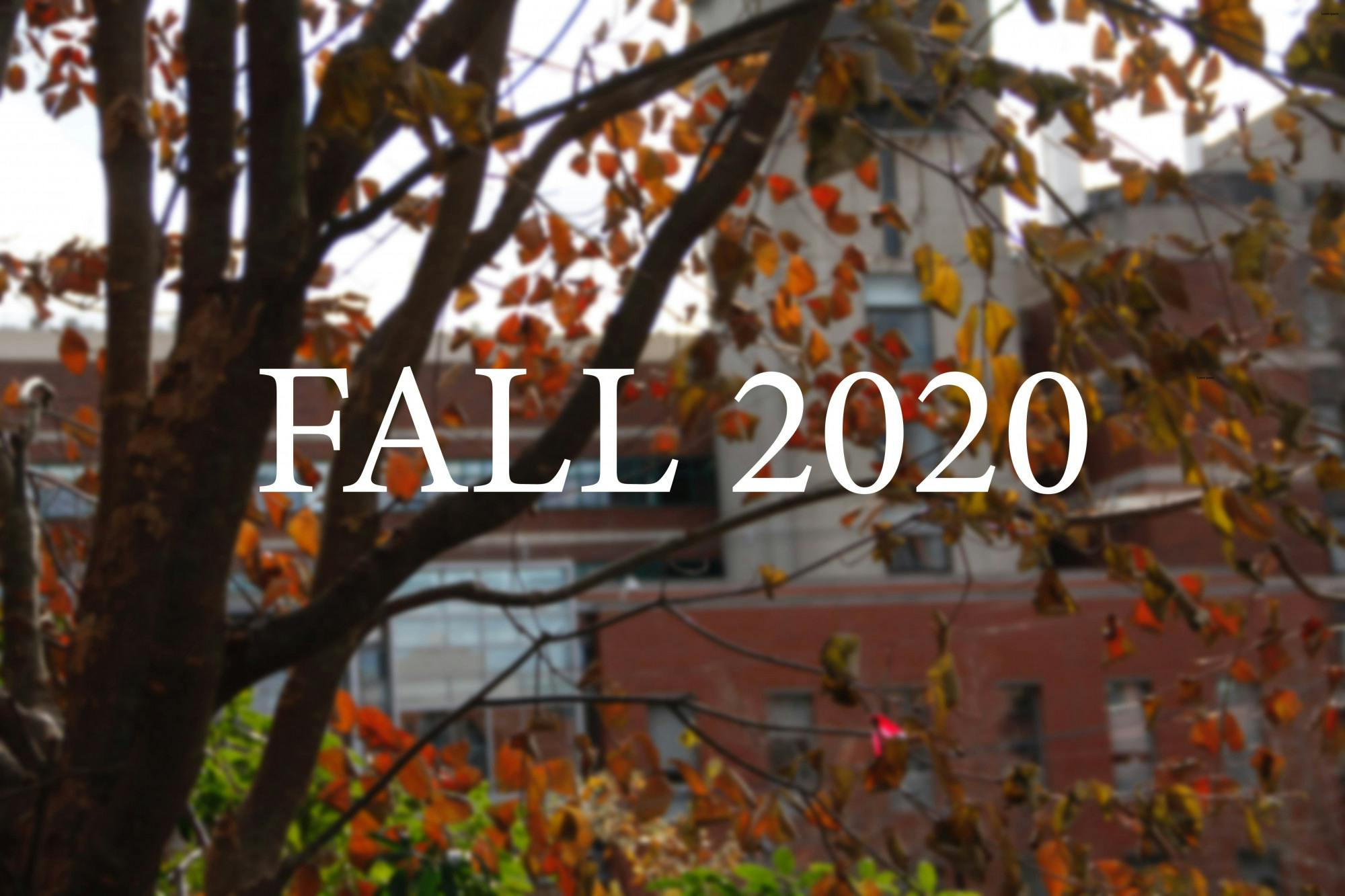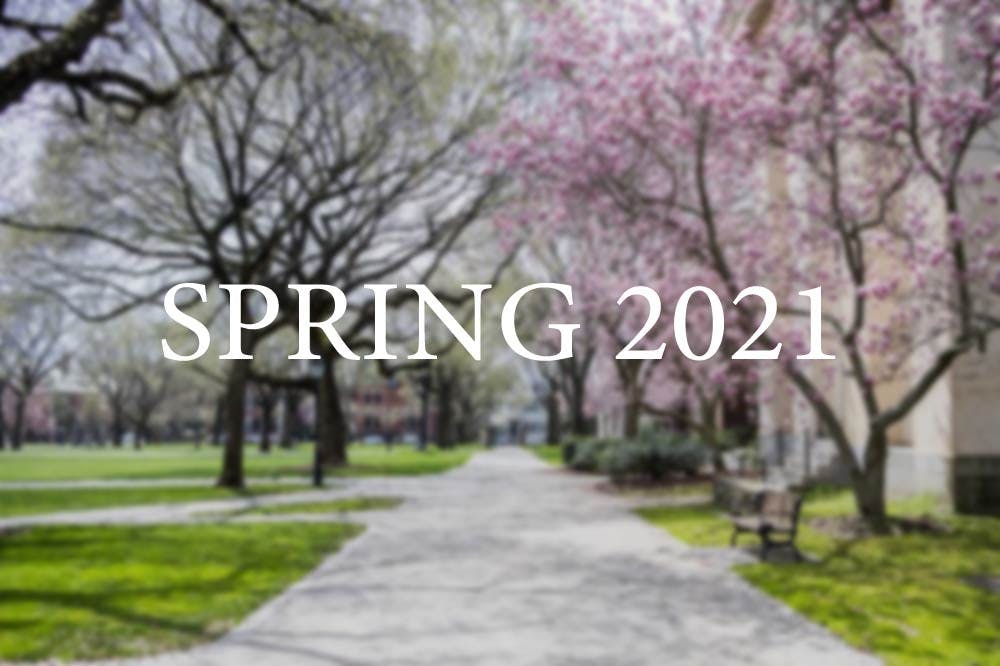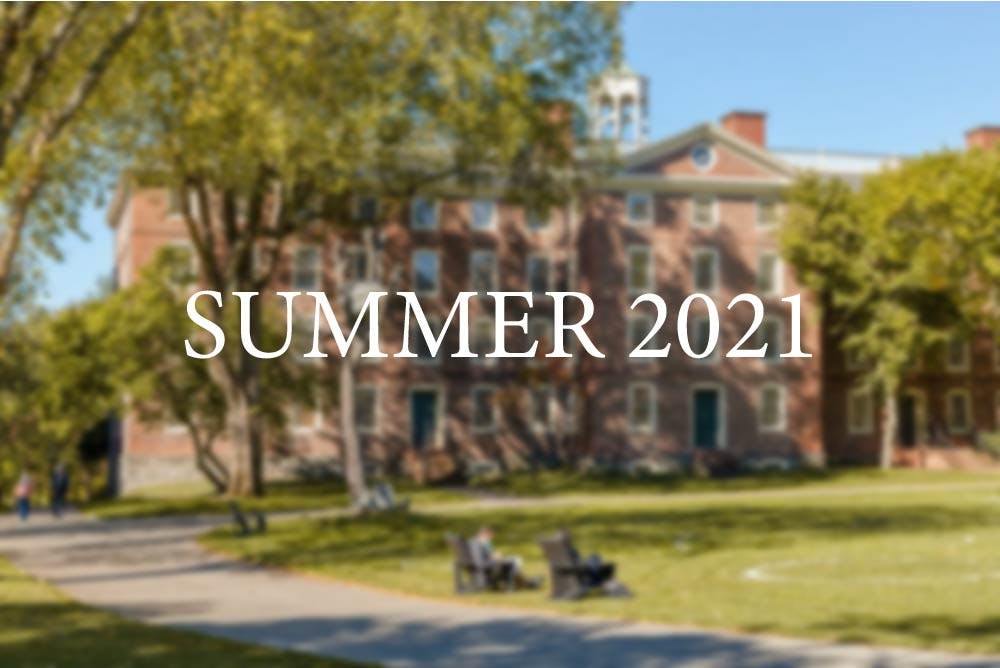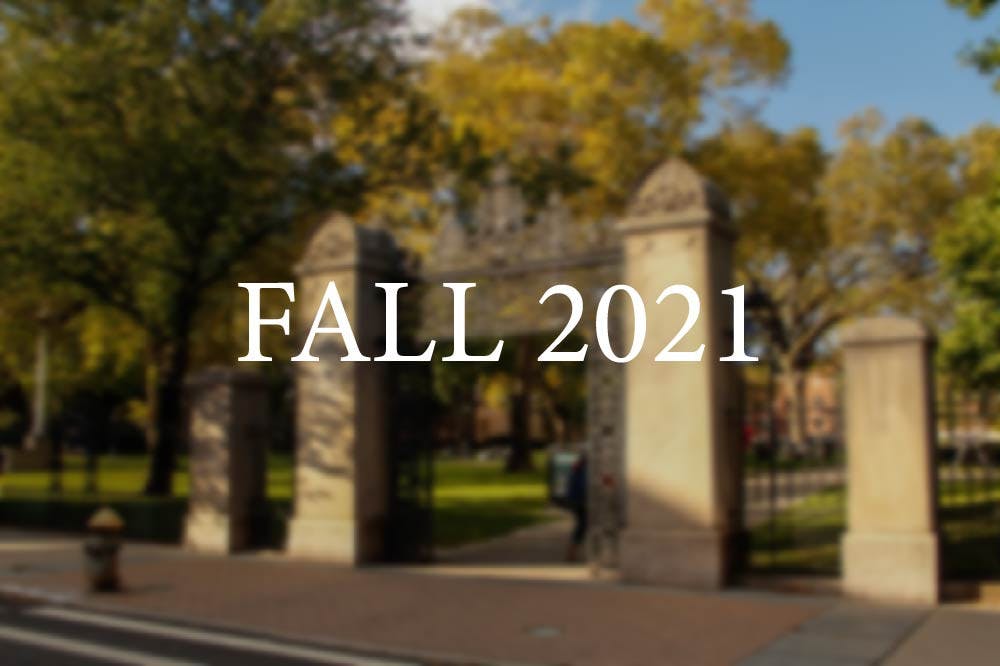The University administered half a million tests over the 446 days the COVID testing program has been running. Routine asymptomatic testing for students, faculty and staff became a staple of life at college during a pandemic over the past 14 months. For many students, it was one of few opportunities to leave their dorm room each week.
On Oct. 25, the University announced that for the second time during the pandemic (the first coming before the rise of the Delta variant), testing would be optional for vaccinated students. In light of this shift in policy, The Herald obtained data from the University’s entire COVID-19 testing program, from its first day, Aug. 24, 2020, until Oct. 31, 2021.
The data, viewed in its entirety, reveals long-term trends in positivity over the four semesters of pandemic school and offers insight into the impact of campus activity and the University’s policies on COVID-19 cases.
Each semester experienced respective upticks in cases. Fall 2020 saw a steady rise in the number of cases weekly until Nov. 18, when the University moved all in-person classes online. In the spring, cases rose the week after move-in, and there was a larger spike in cases beginning around the end of February, with 82 cases from Feb. 23 to March 9.
The summer semester saw very few cases for the first two months. At one point, 27 days passed with zero positive reported cases –– the longest stretch over the course of the testing program — followed by a steady rise in cases paralleling the rise of the Delta variant. Finally, the beginning of fall 2021 featured the most dramatic spike in the history of the testing program (measured by absolute number of cases), recording 137 cases in the first two weeks of September.
The data also reveals some quirks in how students approached testing. Monday was the most popular day for getting tested, while weekend days were the least popular. The testing program reached its busiest days in fall 2021, administering more than 17,000 over the course of one week. Only a few weeks later, when testing was reduced to once-weekly for vaccinated students, faculty and staff, that number dropped to less than 7,000.
What follows is a timeline of the entire testing program, with takeaways from the data and changes in COVID-19 policy interspersed. Click around to view trends in positivity rates over the course of the past year. Find out about how many tests you’ve taken since coming to campus. Relive the past months of COVID testing and all the policy changes that have shaped our campus throughout.
The University adopted a “phased approach” to the start of the fall semester, which allowed a limited number of students to return to campus at the beginning of September and the remainder to move in later in the month. Around 900 undergraduates moved onto campus Sept. 18 to 20, weeks after classes started remotely.
During the quiet period — the two-week mandatory quarantine after the bulk of the on-campus undergraduate population moved in — the testing program reported nine positives and an average positivity rate of 0.03%. When the quiet period ended Oct. 5, students were allowed to attend classes with fewer than 20 members in-person and socialize within “pods,” small groups of up to six friends, without masks.
The period after in person classes resumed saw very few cases — just two over 14 days. But soon after, cases began to steadily rise. From Oct. 20 to Nov. 2, there were 26 total cases, though average test positivity remained low at 0.1%. During that 14 day period, there were multiple new records for most new cases recorded in a single day.
New cases did not subside. In the two weeks that followed, there were 61 new cases and an average positivity of 0.3%. In response, the University shifted classes online Nov. 18, a week before in-person classes were scheduled to end.
Students going home for Thanksgiving, who were not allowed to come back to campus after the vacation, left by Nov. 25, significantly reducing the on-campus population. The number of tests performed per week dropped in tandem, from roughly 11,000 per week to 6,500. Positivity dropped somewhat in the weeks following the policy change, though cases remained much higher than in the first month of the semester.
The class of 2024 finally moved onto campus for the spring semester, when socializing with other first-years and adjusting to college life would prove a challenge. More than 3,000 students moved onto campus for the spring semester’s quiet period, in which the University recorded 79 cases –– nearly a quarter of the total COVID cases over the course of the spring semester. During this time, the United States experienced the worst COVID surge since the start of the pandemic.
In order to accommodate the increased number of students coming to campus, the University also leased rooms in The Omni Hotel in downtown Providence for at least 219 students. The hotel also opened a testing center for students.
Students on campus received several “urgent” emails from the Office of Residential Life warning about the increased number of gatherings on campus.
“We are receiving reports of multiple students in student rooms, informal groups of students gathered outside, a lack of social distancing and mask wearing and travel outside of residences for non-essential purposes,” a Jan. 16 email from the University read. “We need to underscore the immediate need to adhere to the restrictions in place during the Quiet Period.”
Following low positivity rates for several days after quiet period ended, the University moved the Campus Activity Status to Level 2. Zero cases were reported for a six-day period between Feb. 12 and Feb. 17.
Within this time period, first-years received a message from the University reiterating the “growing number of detailed reports of gatherings in residence hall rooms that violate University health and safety policies.” Repercussions up to and including suspension were listed as “potential outcomes” for attending or hosting gatherings that violated University policy.
Cases peaked in the spring semester on Feb. 24, when 18 cases were reported in a single day. Over the two-week period between Feb. 23 and March 9, 82 positive cases were reported, about another quarter of the total cases reported during the spring semester.
Between March 1 and April 1, cases remained low, with an average of four daily positive cases within that interval.
March 12 marked the one-year anniversary of when the University sent students home due to the pandemic. At this point, the University had administered 349,309 tests since the program’s inception, 545 of which yielded positive results.
On April 6, President Christina Paxson P’19 announced in a campus-wide email that the University would require that all undergraduate, graduate and medical students participating in in-person instruction receive the COVID-19 vaccine for the fall 2021 semester, barring medical or religious exemptions. Gov. Dan McKee and the Rhode Island Department of Health announced on April 12 that Providence residents aged 16 and older were eligible to register for vaccination.
By the end of the spring semester, the testing program had averaged about 2,000 tests per day. A total of 207,800 tests were administered, 316 of which yielded positive results.
The summer semester started with extremely low levels of positivity. There were just two positive tests over the first week of the semester, and an average positivity of 0.0002%. As a result, the seven day quiet period, which was already shorter than the 14-day quiet period for fall 2020 and spring 2021, was cut short by three days.
The University announced May 20 that all faculty, staff and students that were on campus for the summer semester were required to be vaccinated by July 1. The vaccination rate for students and employees climbed quickly. By May 21, 31.1% of students and 44.7% of employees had uploaded their COVID-19 vaccination cards to the University’s Health & Wellness Patient Portal. A week later, according to a University testing update, 40.6% of students and 59.7% of employees had uploaded their cards.
The trend reflecting a negligible number of cases on campus continued. From May 9 to the end of July — nearly two months — there were just nine positive tests. During this stretch, there was a period from May 25 to June 20 with zero positive tests. This is the longest stretch without a positive test in the entire testing program.
Restrictions on campus were quickly relaxed following low positivity on campus and rising vaccination rates. The University announced May 27 that community members were only required to be tested once per week and, if fully vaccinated, did not have to wear masks outdoors.
By July 7, students and faculty on campus for the summer semester reached a 90% overall vaccination rate, leading to a relaxation of restrictions. Vaccinated community members were no longer required to wear masks indoors and were removed from the testing program.
Over the following weeks, the University continued to loosen restrictions. The University changed travel-related rules July 15 and lifted density restrictions in certain campus buildings July 18.
In all of July, the testing program saw just one positive case. But following nationwide and statewide upticks in cases due to the Delta variant, Brown announced July 27 that it would reinstate required testing for all community members starting in mid-August.
Days later, the University reinstated an indoor mask mandate for all students and increased the required testing frequency, again citing the rise of the Delta variant.
In the last two weeks of the semester, there were 14 positive cases, with an average positivity of 0.6%. The seven-day average for test positivity reached its highest point for the semester Aug. 6, with just over 1% of tests coming back positive over the prior week.
Plans for the fall 2021 semester were already underway in April, when the University released its plans for a “more traditional campus experience.” The University announced that all students returning to in-person classes would be required to be vaccinated. Students would return in the fall to in-person classes, standard course enrollments and class sizes, normal room occupancy, expanding dining and recreation options and standard lab offerings. Quiet period would no longer be required, and at the start of the semester, vaccinated students were only required to get tested once a week.
In the first two weeks of September, as students started moving in, the University administered 28,765 tests, 137 of which were positive. Campus positivity rates jumped from 0.20% the week before to 0.33% by Sept. 7. Student positivity rates during the first week of September were 0.42%, while the employee asymptomatic positivity rate was 0.03%. The number of positives peaked Sep. 12, when 17 positive cases were reported from the 1,090 tests administered that day.
The spike in cases resulted in temporary COVID-19 restrictions instated Sept. 13.In a campuswide message, the University addressed the spike in cases and how it planned to respond.
“The increase in positive asymptomatic test results is a reflection of the transmissibility of the Delta variant, our significant increase in the number of tests conducted at Brown and an increase in our student population, some of whom have been engaging with other students in multiple smaller groups outside the classroom, especially indoors without masks,” the message read.
Undergraduate student testing increased to two times a week for all students –– vaccinated or unvaccinated. Beginning Tuesday, Sept. 14, Brown Dining Services also paused in-person dining and transitioned to takeout meals.
While undergraduates were limited to social gatherings of five people or fewer, University gatherings in compliance with mask protocols would not be subject to such restrictions.
The next day, the University sent a follow-up email to undergraduate students “clarifying” the prior day’s message. Student organization meetings, previously restricted under the new guidelines instated the day before, would be allowed under strict mask compliance.
By Sept. 15, 98.3% of the student population and 95.6% of employees had uploaded their vaccination cards. Over the following two weeks between Sept. 16 and 30, the positivity rate dropped to 0.08%. The University announced a return to in-person dining Friday, Sep. 24.
By Sept. 29, the University further lifted restrictions by eliminating the five-person limit for undergraduate social gatherings, the guidance to refrain from small-group hopping and the requirement for mask wearing at outdoor athletic events and campus admission tours. The number of total tests administered per week also peaked the week of Sept. 22 to 29.
Positivity rates continued to decline over the first weeks of October, reaching 0.08% during the weeks between Oct. 1 and Oct. 15. By Oct. 6, fully vaccinated faculty, staff, graduate and medical students were longer required to get tested weekly. Testing requirements for fully vaccinated undergraduate students were reduced to once weekly, while unvaccinated employees and students were still required to get tested once every four days.
Between Oct. 15 and Oct. 31 –– the final period of COVID data The Herald obtained –– the absolute number of daily positive cases never surpassed two.
On Oct. 25, the University released its latest testing guidance: Fully vaccinated undergraduate students would no longer be required to get tested weekly. Brown was the first Ivy to drop its testing requirement for students. The number of tests dropped from 1,165 to 593 the day after the guidance was announced.
The number of total tests administered reached an all-time low by Oct. 27, with just under 7,000 tests administered in the week prior.
Do you know JavaScript? Check out the Observable notebook we used to create these visualizations, and consider forking it to explore the data yourself!

Gaya Gupta was Senior Editor of Digital News for the 132rd Editorial Board. She previously covered diversity on campus. She is a junior from the San Francisco Bay Area studying computer science and English.

Ben Glickman was the 132nd editor-in-chief and president of The Brown Daily Herald. He previously served as a metro editor and oversaw the College Hill and Fox Point beat, in addition to writing and editing about city politics, COVID-19 and the 2020 election. He is the co-creator of the Bruno Brief, The Herald's first news podcast. In his free time, he is passionate about birds (also tweeting) and eating way too spicy food.









